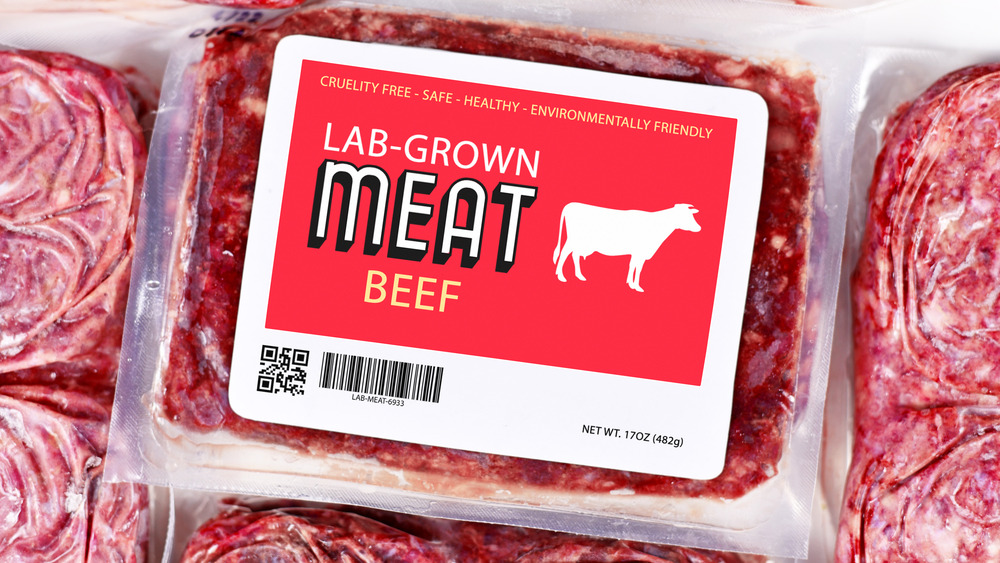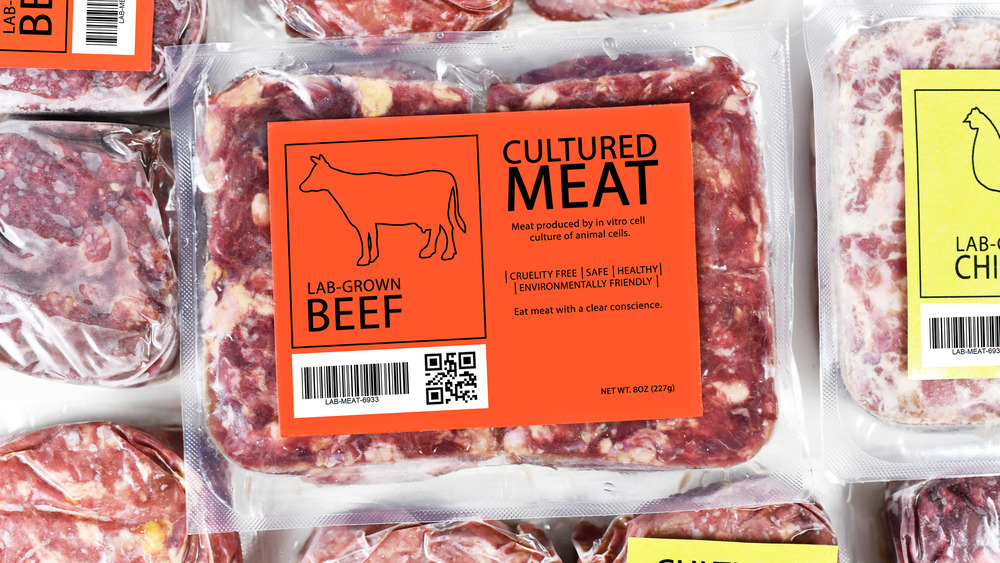Everything You Need To Know About Cultured Meat
In December 2020, Singapore became the first country to approve cultured meat as a marketed retail item with the launch of Eat Just's Good Meat. CNet noted that while The Chicken restaurant in Tel Aviv offers cultured chicken meat, they only offer invitations to their restaurant — unlike Good Meat, which has its chicken sold in at least one location, Singapore's 1880 restaurant (via BusinessWire).
Cultured meat, as Frontiers in Nutrition describes it, is meat produced from animal cells. The benefit is, as Josh Tetrick, Founder and CEO of Eat Just told CNBC in March 2020, "We're going to start a food company that takes the animal, the live animal, out of the equation of the food system." So, the production of a chicken nugget would come without the alleged atrocities inflicted on the chickens that field Costco's $4.99 rotisserie chickens, including being locked up in the thousands amongst their own excrement.
Moreover, if cultured meat was to become a staple like other alternative meat products, then the environmental impact of producing meat would no longer be an issue. As early as 2011, Scientific American reported that the Environmental Working Group found that lamb and beef produce 10 to 40 times more emissions than vegetables and grains. Furthermore, the entirety of livestock based in the US consumes five times as much grain as the American population does directly, that's discounting grain effectively consumed by eating meat. If successful, cultured meat could prove itself as one of the most important food innovations in recent times.
Cultured meat still has a way to go
While promising, the appearance of Eat Just in Singapore is more of a step in the process of proving the concept than finalizing the vision of another meat alternative. Such is the view taken by the World Economic Forum, which sees the need for cultured meat but highlights the challenges. These are the technology to make growing meat from a cluster of cells economically viable at scale and overcoming the clinical image that the term cultured meat conjures.
The biggest challenge in terms of making the production of cultured meat viable is, as Food Revolution Network writes, finding the raw material for the meat to grow in, which is known as a cell culture medium. However, they also grant that some researchers believe they could reuse waste products as a suitable base.
The perception problem is more difficult to address, as without the widespread presence of cultured meat, it's still an abstraction. However, as Food Dive noted, between surveys from 2018 to 2019, the percentage of people declaring that they'd like to try cultured meat increased from 27 percent to 65 percent. Now, this could be due to different sample groups — or it could be due to a genuine change in public perception. Either way, it indicates that if the FDA ever approves Eat Just — a real challenge considering the lack of regulations for cultured meat — a market could be found.

